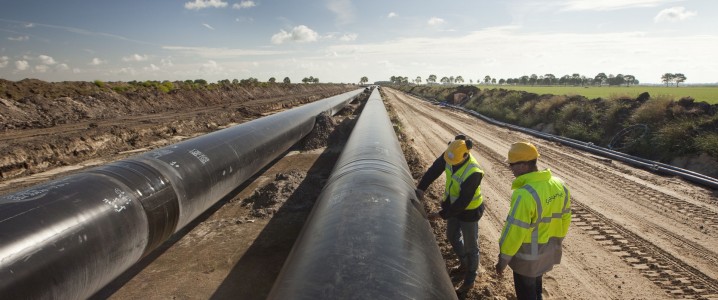So far in July, European natural gas markets have seen the lowest volatility in prices since 2021, but as summer temperatures peak in the coming weeks, demand is expected to rise, and so will the benchmark gas prices.
In recent days, the historic 10-day volatility in European gas prices slumped to the lowest levels since September 2021, according to Bloomberg’s estimates.
The low volatility followed a turbulent month of June, in which prices spiked due to concerns about disruptions to supply from the Middle East during the Israel-Iran conflict.
The markets have calmed since the ceasefire from late June.
But now Europe and north Asia enter the peak summer demand season, with temperatures in Europe expected to be higher than normal. Heat waves in Asia have also increased LNG buying there, pushing up European prices, too.
In addition, BloombergNEF models suggest that wind power generation in Germany, Europe’s biggest economy, is set to decline due to low wind speeds. This is expected to boost demand for electricity generated by gas-fired power plants and coal plants in July.
Dutch TTF Natural Gas Futures, the benchmark for Europe’s gas trading, rose by 1.7% at $40.87 (34.90 euros) per megawatt-hour (MWh) as of 11:55 a.m. in Amsterdam on Thursday, as summer cooling demand grows.
European gas traders and utilities will also have to buy a lot more LNG this summer to fill storage sites ahead of the winter.
At the end of the past winter heating season in March, Europe had its natural gas storage sites depleted to levels last seen three years ago as a cold winter and low renewable energy output, with low wind speeds and little sunshine, forced countries to use more gas than in the past three winters.
Some relief could come from the eased rules and targets for natural gas storage refills in the EU, endorsed by the European Parliament this week in a move aimed at preventing price spikes.
The greater flexibility comes in response to the fears of several large gas-consuming nations in Europe that they would have to either subsidize storage filling when it’s uneconomical or miss the targets.
By Charles Kennedy for Oilprice.com
More Top Reads From Oilprice.com:

